Apologies for the delay in this review - it has been a very hectic time at Chez Walker but I'm aware that Blogvent is approaching fast so I have some posts I want to liberate before December is upon us. For starters, I was very kindly sent this book...
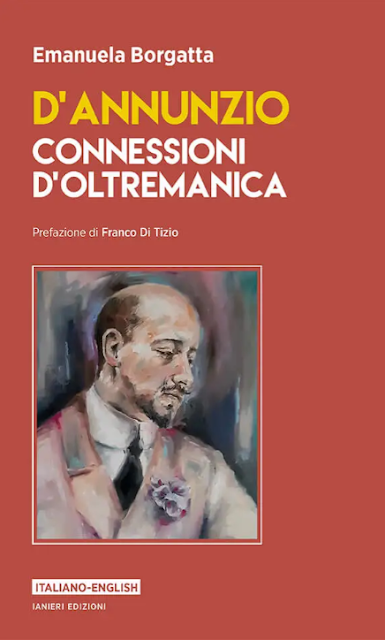
Written in both Italian and English, it explores the life, loves, reputation and influence of writer, lover, dog owner and political figure Gabriele D'Annunzio, who I must admit I knew nothing about. What surprised me even more is that when I mentioned this book online it drew some very strong opinions about the gentleman and his politics, but this book offers an insight into some unexpected areas of his life, together with interviews that show how much cross-pollination the artistic environment offered.
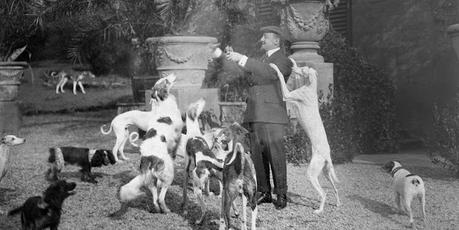
D'Anunzio and his Dogs
Okay, let's start with the greyhounds - whilst I was prepared to read about Ruskin and Pre-Raphaelitism, not to mention fascism, I was not prepared for greyhounds. The average person on the street in early 20th century Britain would have known D'Annunzio for his long-muzzled companions who he not only 'coarsed' (simulated hunting) but also had a great affection for. He planned to write a book entitled Lives of Illustrious Dogs, although that never materialised, and described his beloved dog Fullerton, four-time waterloo cup winner and 'kidnapped by gipsies' although that is a bit dubious. His elevation of greyhounds from working dogs to aesthetic masterpieces is very interesting and reminded me of paintings by fellow Italian Boldini, like the portrait of Luisa Casati...
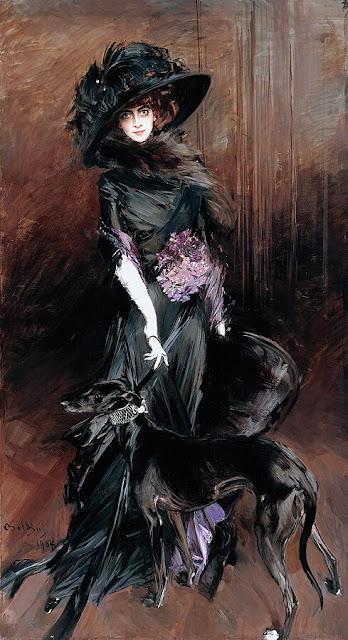
Marchesa Luisa Casati, with a greyhound (1908) Giovanni Boldini
As fascinating as his connection to the popularity of greyhounds is, I was fascinated by the threads that connected D'Annunzio to art in Britain during the latter end of the twentieth century. He expressed a love of the work of Lawrence Alma-Tadema. He wrote poetically of the art he saw in the 1883 Roman Fine Art Exhibition, describing Alma-Tadema's 'gem-like painting' and superb handing of color. It was from Alma-Tadema that D'Annunzio moved under the spell of the Pre-Raphaelites. A year after Rossetti died, D'Annunzio wrote 'We demand something truly youthful, something truly new' and that something turned out to be the spread of Pre-Raphaelitism through Italy. It is argued that without the shadow of Rossetti, the Italian writer would not have become the figure he created, formed through the writings of Ruskins and the visuals of the generations of Pre-Raphaelites.
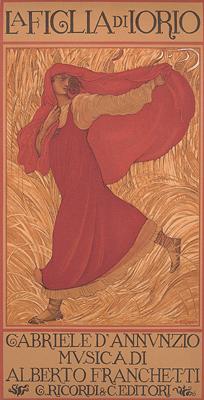
Poster for La Figlia di Lorio (libretti by d'Annunzio)
An aspect of the book I really enjoyed were the interviews with the subject of each chapter explored with an expert on the subject, for example Rebecca Lipkin on Ruskin. This enables you to see not only how D'Annunzio would have seen the subject, but explore the connections across the Channel. This is especially interesting in the role of place as biography - d'Annunzio created and donated his home Vittoriale degli Italiani, 'the shrine of victories of the Italians'...
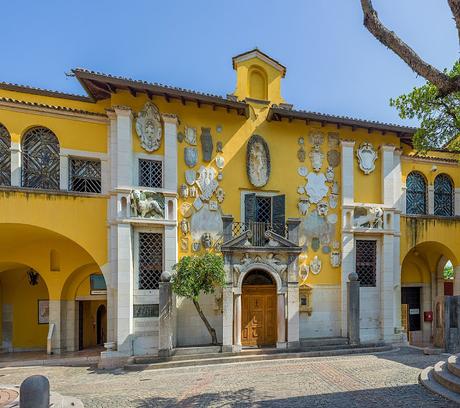
Prioria main entrance - gloriously yellow
The interview for this section was with Daniel Robbins of Leighton House, which I found fascinating - as you know Mr Walker curates the Russell-Cotes Art Gallery in Bournemouth, a house created and left to the people of Bournemouth by Sir Merton and Lady Annie Russell-Cotes. The idea of leaving a monument to your personal idea of how you should be remembered is a subject I never tire of, especially when you read comments on the internet that it is 'a fascist lunapark' (a phrase I will definitely use again) but with such a grandiose title, you get a very clear idea of how d'Annunzio felt he should be remembered. Also, the house is a good opportunity to use one of my favour words - defenestrated. He moved to the house after his defenestration which is a lovely way of saying someone lobbed him out of a window.
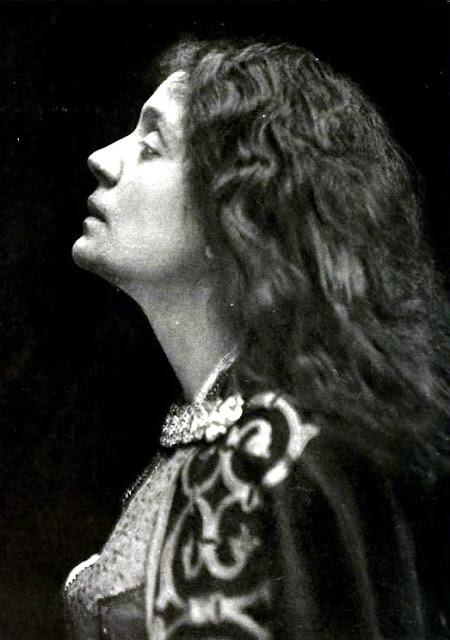
The utterly stupendous Eleonora Duse
Being a man of the theatre, it is unsurprising that d'Annunzio was attached to some of the most famous actresses of his generation including Eleonora Duse who he met at the turn of the century and remained linked to for around a decade. She appeared in his play Francesca da Rimini (1901) and their relationship was scandalously revealed in his novel The Flame of Life (1900). His life, his art and his lovers all contribute to his reputation as a decadent figure.
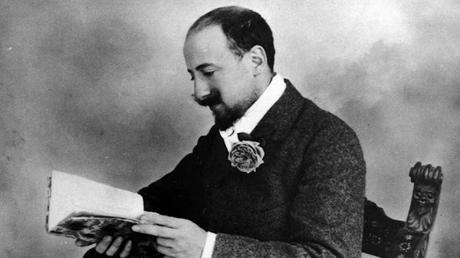
D'Annunzio, reading (probably something decadent)
His reputation, politically, is problematic enough to probably cause someone to assist him out of a window, but this is a book that explores where d'Annunzio's inspiration for his art came from and the links to England, Pre-Raphaelitism and notable figures is enlightening. As I have said before, I grew up being told that the Pre-Raphaelites were a cul-de-sac of art that led nowhere, so the research here reveals the inspiration others took from their works and ethos. I can heartily recommend this book as it is fascinating, easy to dip in and out of, lushly illustrated and the interviews bring new light on both their own subject and d'Annunzio.
The book is available now, and further information can be found here.

